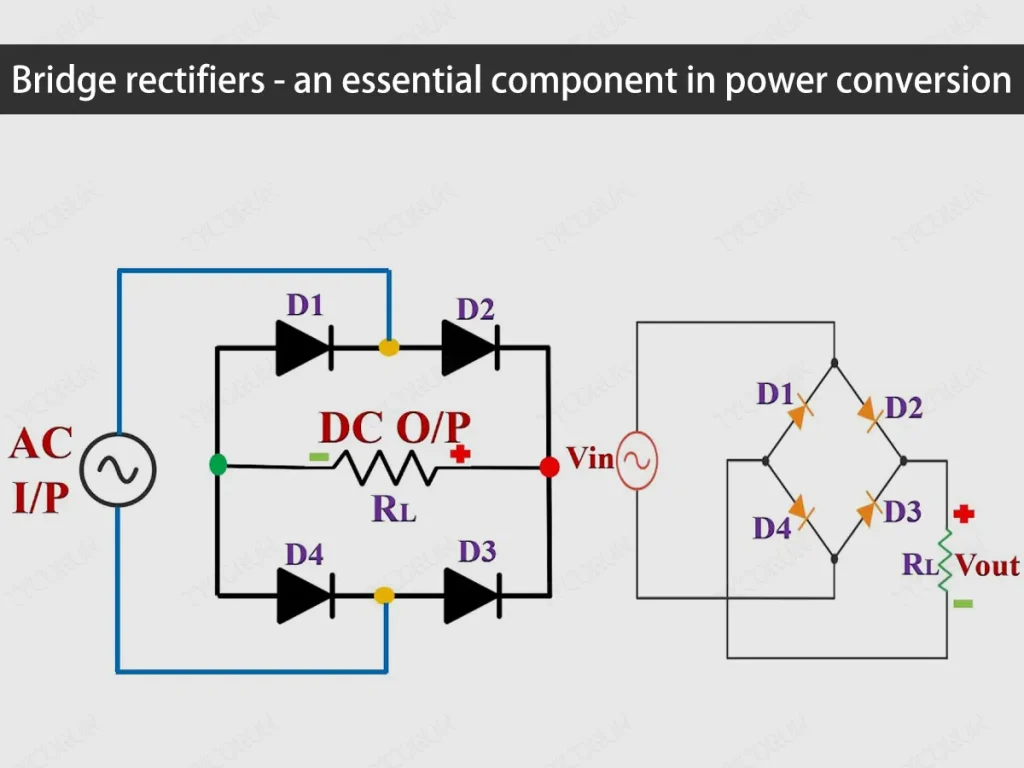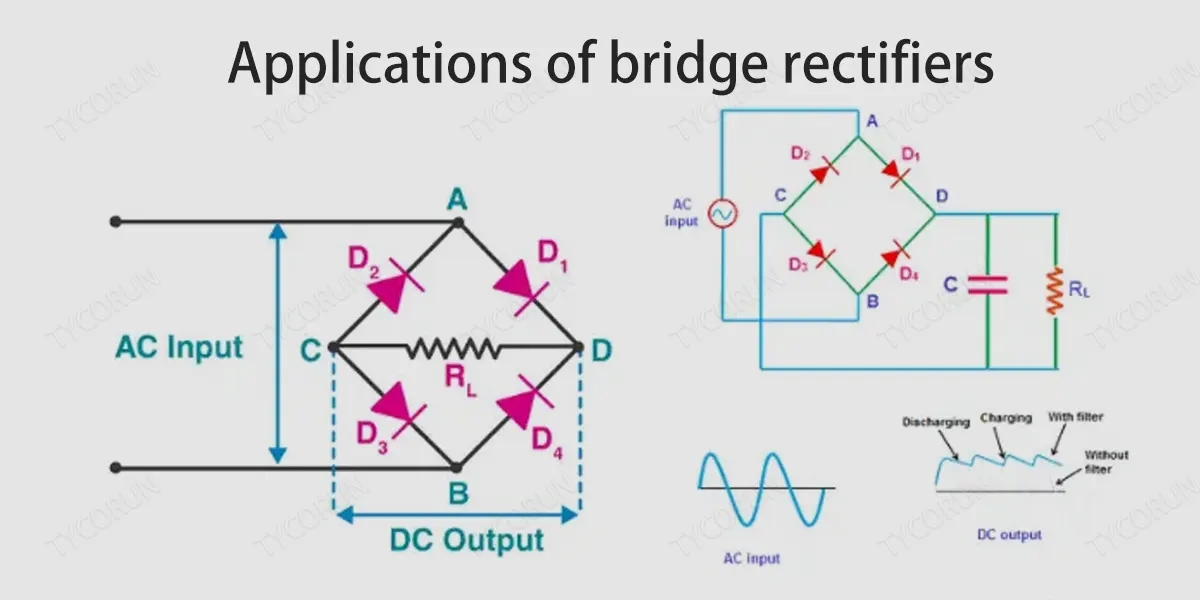Home » lithium ion battery knowledge » Bridge rectifier – an essential component in power conversion
Bridge rectifier - an essential component in power conversion

What is a bridge rectifier?

How bridge rectifier works

The role of bridge rectifier
The bridge rectifier is used in the alternator power supply system. Its function is to convert the alternating current generated by the alternator into direct current to supply power to electrical equipment and charge the battery. The second function is to limit the reverse flow of battery current back to the generator to protect the battery. The generator is not burned out by reverse current.
Silicon diodes have the characteristic of unidirectional conduction, that is, when a certain voltage is applied to both ends of the silicon diode (the positive electrode of the power supply is connected to the positive electrode of the diode, and the negative electrode of the power supply is connected to the negative electrode of the diode), the diode will conduct and current will flow. On the contrary, the diode will not conduct electricity.
This way, current can only pass in one direction. People use this characteristic of diodes to make rectifiers. When AC voltage is applied to the rectifier, only the positive half cycle of the AC power is allowed to pass, but the negative half cycle is not allowed to pass, so pulsating DC power is output at the negative end of the rectifier.
Advantages of bridge rectifier
Compared with other types of rectifiers, bridge rectifiers have the following advantages:
Efficient: The bridge rectifier is able to convert higher effective value DC from AC because it is able to utilize both the positive and negative half cycles of the AC.
Stable: A bridge rectifier can provide stable DC output because its output voltage is not affected by the AC input waveform.
Simple: The circuit of a bridge rectifier is very simple and requires only four diodes, making it easy to construct.
Applications of bridge rectifiers
Here are some common applications of bridge rectifiers in microcircuit designs:
1. DC power supply: Bridge rectifier is widely used in DC power supply design in microcircuit. By converting AC power to DC power, it can provide stable power supply suitable for many electronic devices such as integrated circuits, microcontrollers, sensors, etc.
2. Power adapter: Microcircuit devices often require power supplies with specific voltage and current ranges. Bridge rectifiers can be used in power adapters to convert incoming AC power to the required DC power for use by microcircuits.
3. Chargers: In mobile devices and battery-driven applications, bridge rectifiers are used to design battery chargers. It converts household AC power into the appropriate voltage and current for charging batteries in mobile devices.
4. LED driver: LED (Light Emitting Diode) is widely used in microcircuit, and LED usually requires DC power supply. Bridge rectifiers can be used in LED drive circuits to ensure that the LEDs receive the required DC power.
5. Motor driver: In some micromotor applications, bridge rectifiers can also be used to convert AC power to DC power to drive DC motors. This is common in some small electric equipment.
6. Power supply for electronic devices: Many electronic devices in microcircuits require stable DC power. Bridge rectifiers can be embedded in these devices to ensure they receive a stable power supply.
In these applications, the advantage of bridge rectifiers is that they can provide relatively stable DC power supply, which is suitable for the power supply needs of many microcircuits and electronic equipment. However, designers need to consider factors such as rectification efficiency and ripple to ensure the quality and stability of the power supply.
Difference between bridge rectifier and inverter
Bridge rectifiers and inverters are both critical components in electronics, but they serve completely different purposes.
The main function of a bridge rectifier is to convert alternating current (AC) into direct current (DC). This transformation is called reorganization.
Alternating current is the type of current most commonly provided by power companies because of its ability to travel long distances with minimal losses. However, many electronic devices require DC power to operate and therefore require a bridge rectifier.
In contrast, an inverter performs the exact opposite function of a bridge rectifier. Inverters are designed to convert direct current (DC) into alternating current (AC). This is particularly useful because while DC power is easier to store (for example, in batteries), many home appliances and systems run on AC power.
In summary, although bridge rectifiers and inverters are both critical in current control, they perform opposite tasks.
More information: 3000w inverter, 2000W pure sine wave inverter, 1000w inverter, 500w power inverter


























